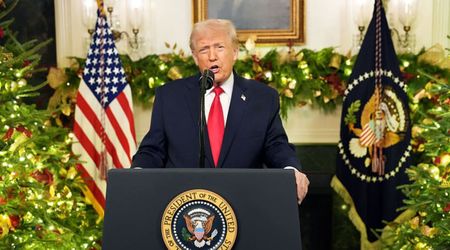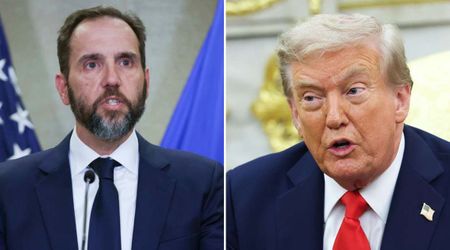Operation Midnight Hammer: A whopping 125 aircraft and 'deception' used to strike Iran’s nuclear sites

WASHINGTON, DC: The United States has carried out a series of airstrikes on three of Iran's nuclear facilities - dubbed Operation Midnight Hammer, with the Pentagon calling it the “largest B-2 operational strike in US history.”
The targets included three of Iran’s nuclear facilities - Fordow, Natanz and Isfahan. The result, as Chairman of the Joint Chiefs of Staff Gen Dan Caine put it, was “extremely severe damage and destruction.”
Seven stealth bombers flew 18 hours to drop 'bunker buster' bombs on Iranian nuclear sites
“This was a highly classified mission with very few people in Washington knowing the timing or nature of this plan,” said Gen Caine, during a Pentagon briefing that pulled the curtain back on the operation Sunday morning, June 22.
The mission launched from Whiteman Air Force Base in Missouri, where seven B-2 Spirit stealth bombers took off on an 18-hour journey to Iran. Another fleet of B-2s flew west across the Pacific in a well-orchestrated decoy move - media outlets were even reporting that bombers were headed toward Guam.
The real strike team crossed the Atlantic and Mediterranean, with multiple mid-air refuelings. Once over the Middle East, they linked up with fighter jets and support aircraft to pull off what Caine described as a “complex, tightly timed maneuver.”
A map behind Caine showed the full path and play-by-play of the mission. Around 5 pm ET Saturday, just as bombers neared Iranian airspace, a US submarine fired off more than two dozen Tomahawk cruise missiles at the Isfahan site.

Bombs, bunkers, and a total blackout
As the B-2s swooped into Iranian territory, they weren’t flying blind. The US had already used “several deception tactics, including decoys,” and fighter jets were clearing the skies, scanning for enemy aircraft and SAMs (surface-to-air missiles). But as it turns out, there was nothing.
“We are currently unaware of any shots fired at the US strike package on the way in,” Caine revealed. “Iran's fighters did not fly, and it appears that Iran's surface-to-air missile systems did not see us. Throughout the mission, we retained the element of surprise.”
At 6:40 pm ET (2:10 am in Iran), the lead B-2 dropped its massive payload—two GBU-57 Massive Ordnance Penetrators (aka "bunker-busters") on the Fordow site. Over the next 25 minutes, 14 MOPs would pummel Fordow and Natanz, while those Tomahawks made their entrance in Isfahan.
By then, the US strike team was heading home. And there was still no response from Iran. “The US military then began its return home,” said Caine. “No shots were fired by Iran at the US on the way in or out.”
Trump pulls the trigger on striking Iran's nuclear sites
According to Caine, "more than 125 US aircraft" were involved in the raid, including bombers, fighter jets, refuelers, and surveillance aircraft. The arsenal consisted of more than 75 precision-guided weapons.
“Initial battle damage assessments indicate that all three sites sustained extremely severe damage and destruction,” Caine confirmed, adding that full evaluations are still underway.
The general had a warning. “Our forces remain on high alert and are fully postured to respond to any Iranian retaliation or proxy attacks, which would be an incredibly poor choice. We will defend ourselves," he said.
Defense Secretary Pete Hegseth heaped praise on Trump. “The order we received from our commander in chief was focused, it was powerful, and it was clear,” he said. “We devastated the Iranian nuclear program, but it's worth noting that the operation did not target Iranian troops or the Iranian people.”
“The operation President Trump planned was bold, and it was brilliant, showing the world that American deterrence is back. When this president speaks, the world should listen," he continued.
"Our B-2s went in and out … and back without the world knowing at all," Hegseth said. "In that way, it was historic. A strike that included the longest B-2 Spirit bomber mission since 2001, and the first operational employment of the MOP, a Massive Ordnance Penetrator."
Inside the Oval Office call that led to Trump greenlighting the strikes
Turns out, the final green light came on Saturday aboard Air Force One (M1) during a phone call between Trump and Hegseth. Hegseth laid it out plainly, saying it was either time to strike or abort the mission. Trump responded with the go-ahead, according to a White House official.
According to CBS News, Trump was already leaning toward the strike as early as Thursday, despite Press Secretary Karoline Leavitt saying he’d decide “within two weeks.”
Behind the scenes, Steve Witkoff, the special envoy to the Middle East, had reportedly told Trump weeks earlier that Iran wasn’t serious about any nuclear deal. That advice may have nudged the president further toward action.
Later Saturday night, Trump addressed the nation flanked by Hegseth, Secretary of State Marco Rubio, and Vice President JD Vance. He called the strikes a “spectacular military success” and warned Iran about what’s coming if it doesn’t stand down.
“If peace does not come quickly, we will go after those other targets with precision, speed, and skill; most of them can be taken out in a matter of minutes,” Trump said. “There's no military in the world that could have done what we did tonight, not even close. There has never been a military that could do what took place just a little while ago.”










